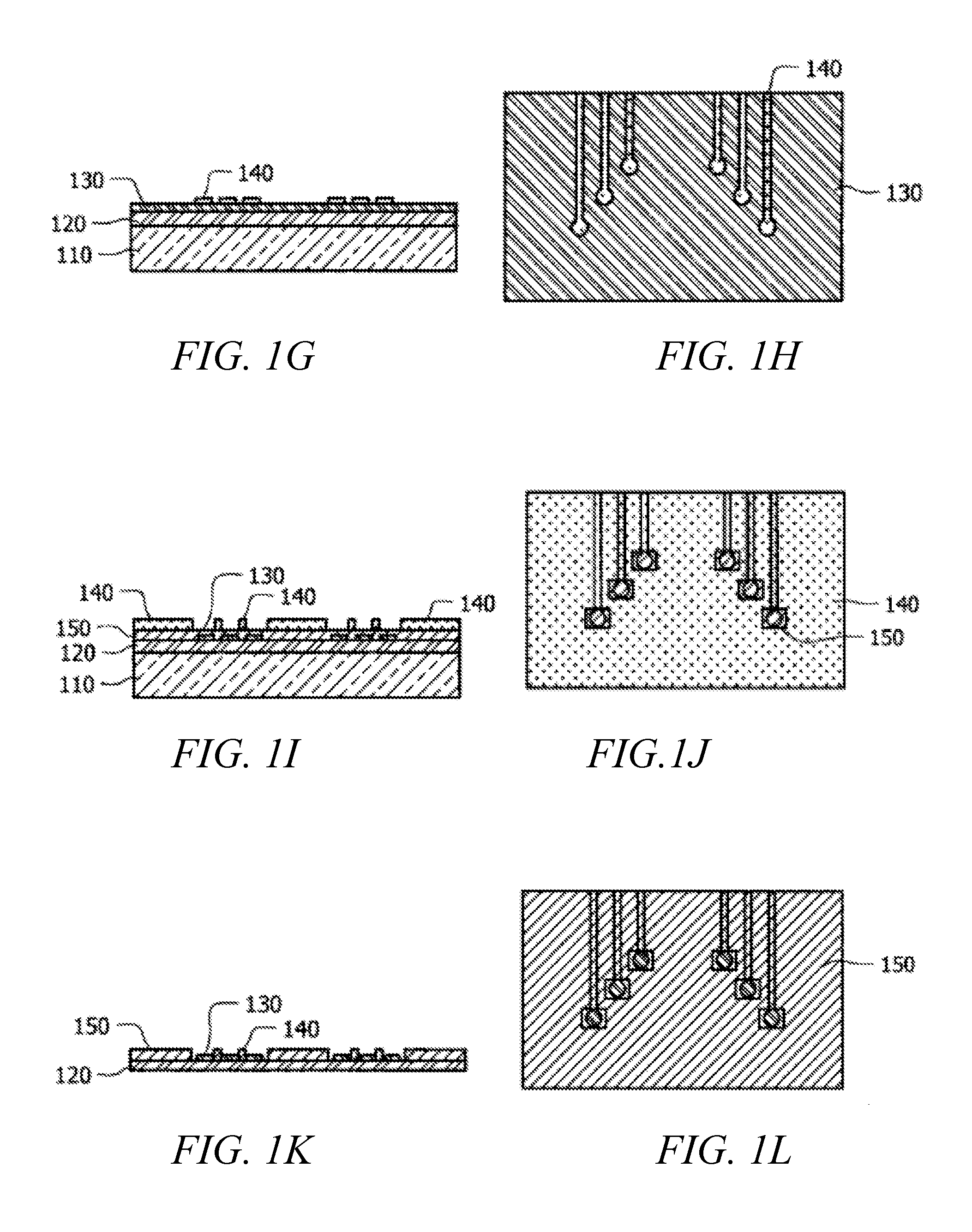Graphene electrodes on a planar cubic silicon carbide (3c-sic) long term implantable neuronal prosthetic device
a silicon carbide and graphene electrode technology, applied in the field of medical devices, can solve the problems of difficult direct long-term interaction of the microchip with the body, many problems of the same electrode, and the biomedical device gained an entirely new level of complexity, and achieve excellent electrical conductivity and specific capacitance in electrolytes. , the effect of expanding the surface area
- Summary
- Abstract
- Description
- Claims
- Application Information
AI Technical Summary
Benefits of technology
Problems solved by technology
Method used
Image
Examples
Embodiment Construction
[0017]In the following detailed description of the preferred embodiments, reference is made to the accompanying drawings, which form a part hereof, and within which are shown by way of illustration specific embodiments by which the invention may be practiced. It is to be understood that other embodiments may be utilized and structural changes may be made without departing from the scope of the invention.
[0018]The present invention provides a long term implantable neuronal prosthetic device including graphene electrodes on a planar 3C—SiC. Graphene is mechanically and chemically resilient. Single layer graphene has excellent conduction properties due to its zero band-gap and large, uniform sheets are ideal for the production of multiple, large scale uniform electrodes. Additionally, the band-gap of graphene can be tuned using the underlying substrate, the addition of multiple graphitic layers, and even the geometry of the devices. Graphene performs superiorly as an electrochemical do...
PUM
| Property | Measurement | Unit |
|---|---|---|
| thickness | aaaaa | aaaaa |
| temperatures | aaaaa | aaaaa |
| Fermi level | aaaaa | aaaaa |
Abstract
Description
Claims
Application Information
 Login to View More
Login to View More - R&D
- Intellectual Property
- Life Sciences
- Materials
- Tech Scout
- Unparalleled Data Quality
- Higher Quality Content
- 60% Fewer Hallucinations
Browse by: Latest US Patents, China's latest patents, Technical Efficacy Thesaurus, Application Domain, Technology Topic, Popular Technical Reports.
© 2025 PatSnap. All rights reserved.Legal|Privacy policy|Modern Slavery Act Transparency Statement|Sitemap|About US| Contact US: help@patsnap.com



